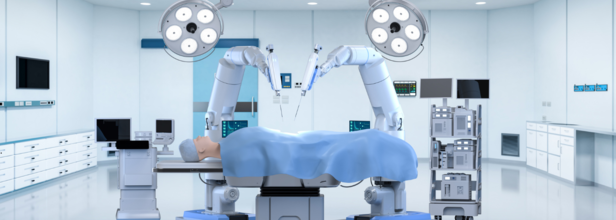
Credits: Canva
The Youngest Boy In The World Underwent A Successful Robot-Assisted Surgery
We all hear about robots and AIs taking over every sphere of work or profession that exists. This time, it is in the medical profession. This is not about whether they can replace doctors, but about what robots can do when it can coexist with the human mind. This is such a story where a four-month-old boy, underwent a robot-assisted surgery, and became the youngest in the world to get it done. The parents of the young boy, reports the BBC, said they were "amazed" at the result after fearing that the treatment was not possible.
The boy is Mohammed, who went under the knife at Royal Manchester Children's Hospital for a kidney issue. Clinical trials began and used surgical robots to mimic human joints. While his parents were initially concerned, the operation went well and the "revolutionary care" made the surgery successful.
What Was Mohammed's Condition?
Mohammed underwent surgery on a tube that connects his bladder to his kidneys which were at risk of infection. His mother, Mariam told the BBC that she did not think it was possible for him to have the surgery, especially when his age is only four months. However, with the help of the robot, the surgery was done precisely. "It was a huge relief when we found out that he wouldn't have to wait because doctors can operate so precisely using the robotic system."
What Is Robotic Surgery?
Robotic surgery allows doctors to perform different and complex procedures with more precision, flexibility and control than is possible with traditional procedures. It is also performed through tiny incisions, thus it is not way too invasive in nature. This surgery is called robot-assisted surgery.
In robotic surgery, a camera arm and mechanical arm are used. The camera arm provides the surgeon to see a magnified, high-definition, 3D view of the surgical site, while the mechanical arm allows the surgeon to control the arms while seated in a control center, called a console. This arm also is attached to a surgical instrument, which the surgeon then uses to perform surgery.
Why Is It Done?
Like Mohammed's case, there are many cases where complex surgeries are required to perform. However, with manual techniques, it may lead to a wider cut, and a wound that will take too long to heal. With robot-assisted surgery, it can lessen the complications of the surgical site, including infections, it will also lead to less pain and less blood loss. Robot-assisted surgeries are also minimally invasive and could lead to a shorter hospital stay and quicker recovery, with smaller and less noticeable scars.
The Success
David Keene, who is a consultant surgeon at the hospital where Mohammed underwent the surgery said that medics were excited by the "level of precision" the robot technology had brought. He was treated under a trial use of Versius Surgical System in paediatric surgery and the robot had a small, portable surgical robot with a modular arm, which was controlled by the surgeons.
The best thing, Mohammed was back home just three days after the surgery and his mother says that he has been doing great, ever since!
© 2024 Bennett, Coleman & Company Limited

